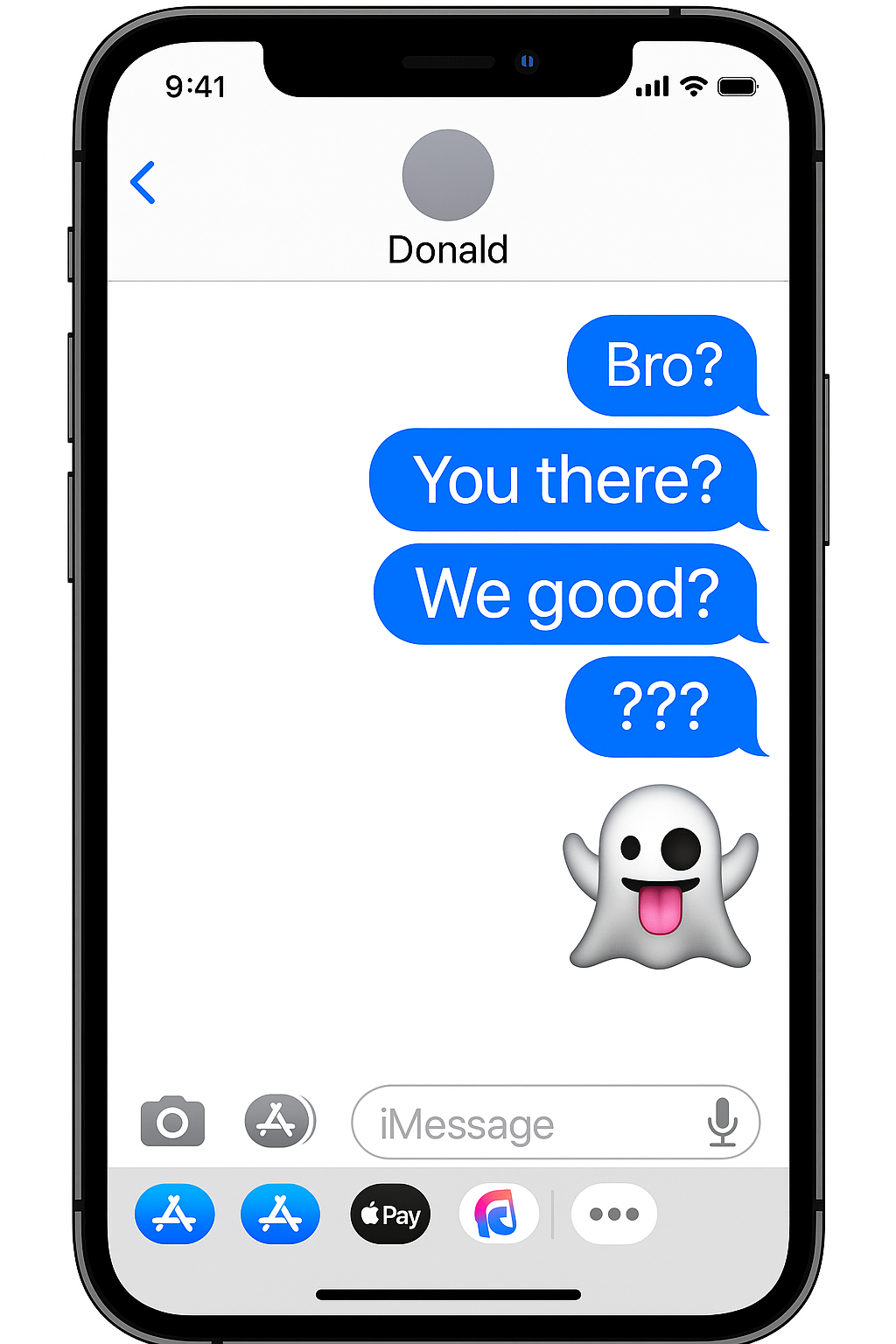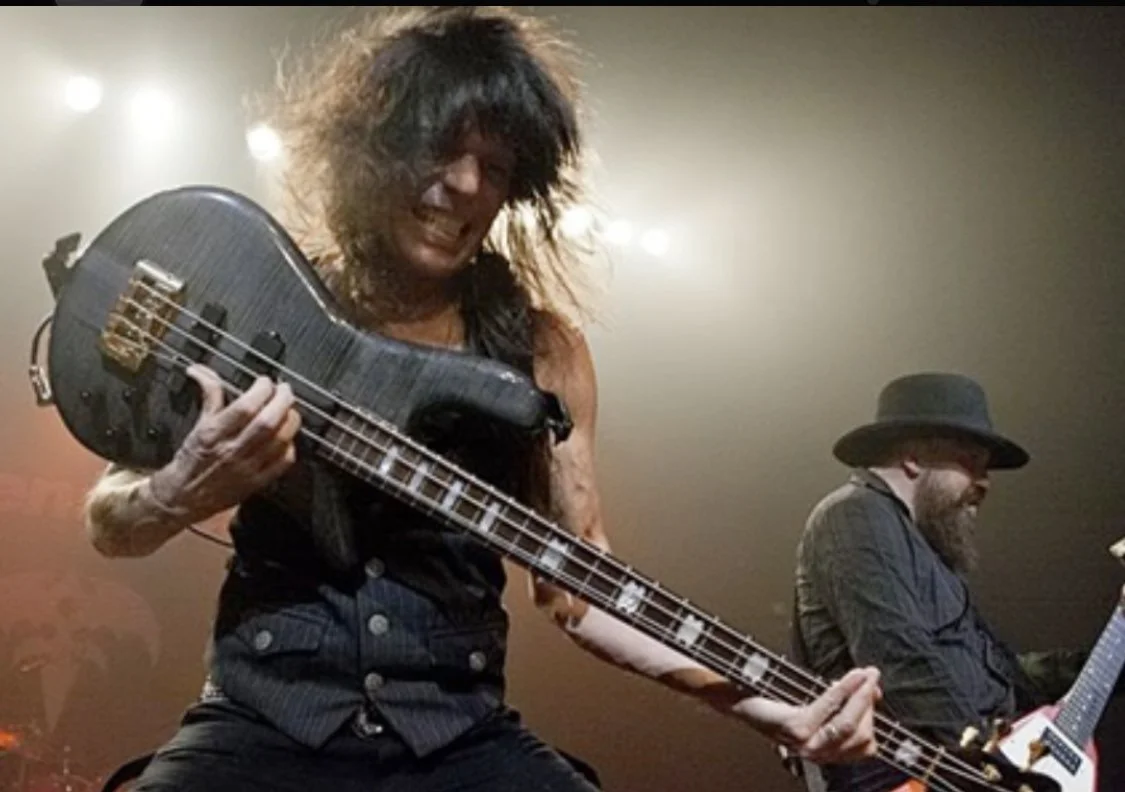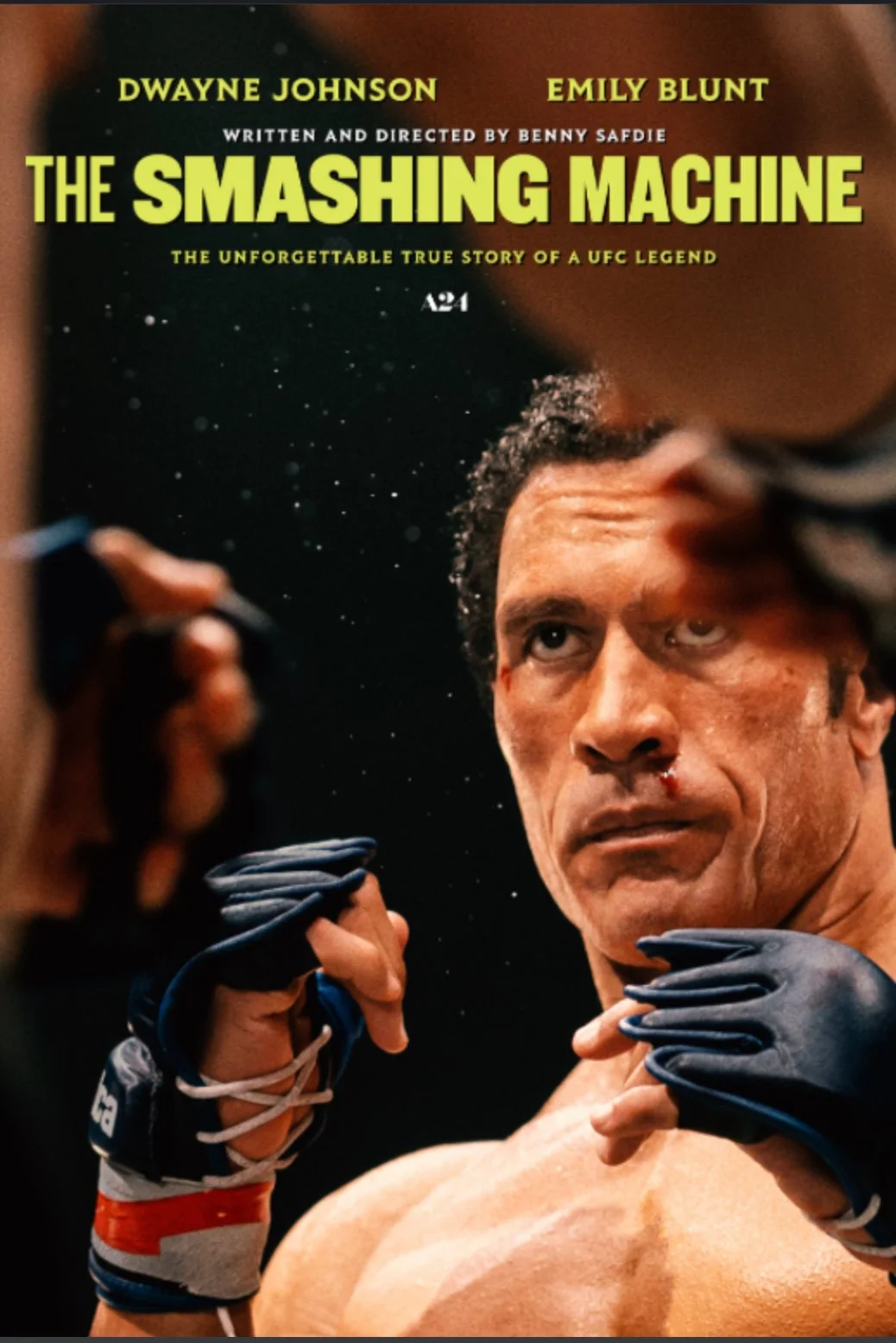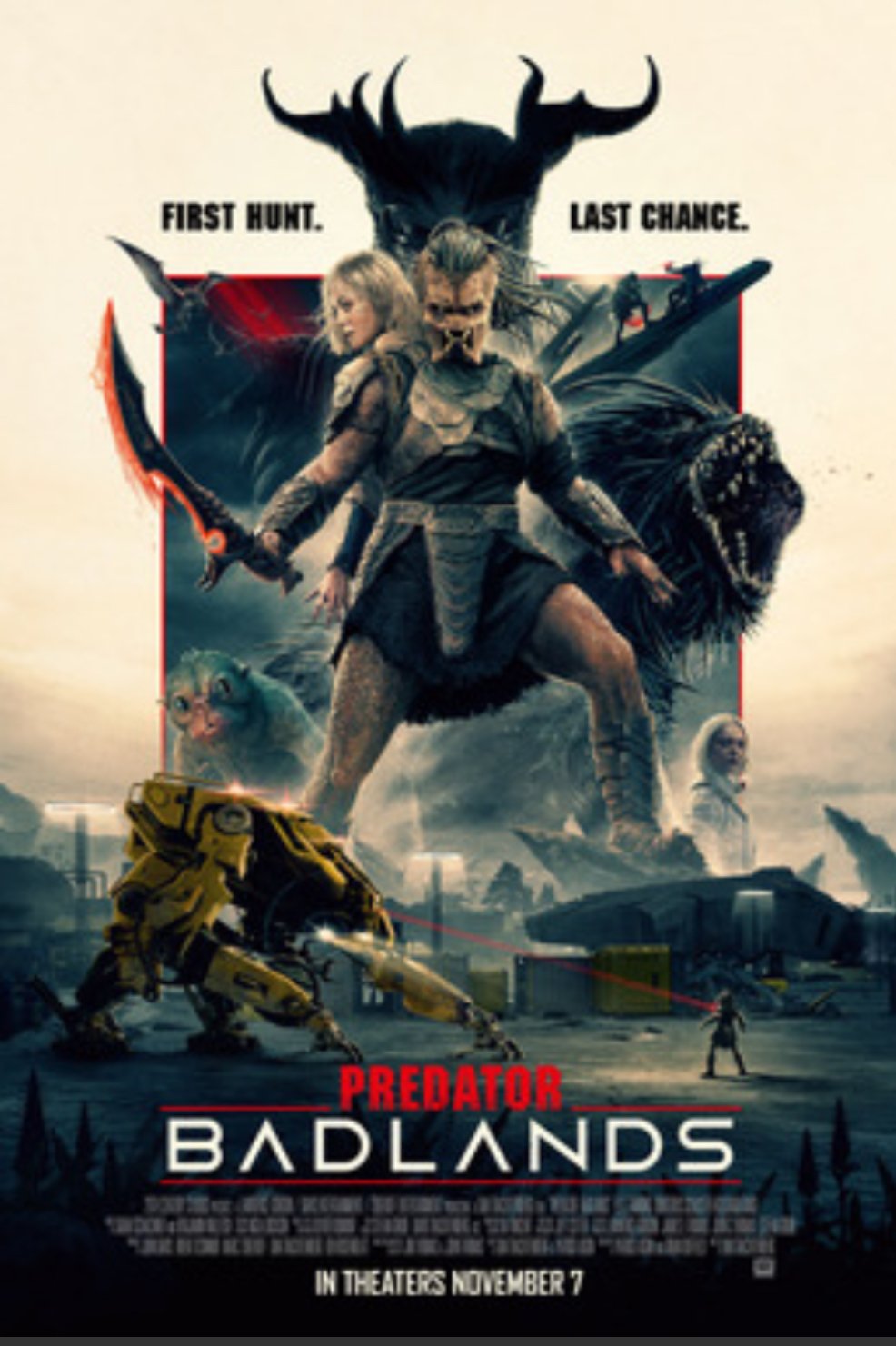Inside the Underground GLP-1 Parties — America’s New Weight-Loss Speakeasy
America now has an underground scene you won’t find in any fitness magazine: the GLP-1 Party. It’s part Tupperware gathering, part speakeasy, and part social experiment — where friends secretly share skinny-shot wisdom and joke about missing carbs. Welcome to the newest bizarre chapter of modern wellness.
There was a time when people snuck whiskey into flasks at weddings, hid cigarettes from their parents, or swapped bootleg mixtapes behind the bleachers. But now?
Welcome to the GLP-1 Speakeasy — America’s newest underground social experiment. Part health trend, part black market swap meet, part Tupperware party for people who “just don’t get hungry anymore.”
If you thought Ozempic was just a prescription… buckle up. We’re entering the beige-couch, charcuterie-board, “Girl Dinner” dystopia.
The Birth of the Skinny-Shot Social Club
It always starts the same way. A book club. A mom group. A couple of friends at a wine night. One person mentions they “started something new,” another admits they “barely eat now,” and suddenly you’ve got a circle of people whispering about doses like teenagers discussing their first beer.
Boom. GLP-1 Party.
Snacks no one touches. LaCroix cans sweating untouched on the countertop. And someone’s cousin who “knows a guy” showing up with a tiny cooler like it’s contraband.
The Black Market Ozempic Hustle
Here’s where it gets spicy. Not everyone at these gatherings is holding a valid prescription.
Some are:
splitting doses
trading leftovers
buying from shady online pharmacies
meeting strangers in parking lots
Venmo’ing people with usernames like F1tnessPlug1997
It’s not exactly the Prohibition era…But the energy is absolutely “Psst… you lookin’ for GLP-1, buddy? CommonX doesn’t judge — we just observe the chaos of modern America with popcorn. Well… metaphorical popcorn. Nobody at these parties is eating.
Gen-X Watching This Like: “This Is Just Tupperware Parties With Needles.”
Gen-X grew up on:
TV dinners
Kool-Aid
drive-through everything
zero-sugar NOTHING
soda the size of a small aquarium
cigarettes inside the damn Applebee’s
And now? Their friends are injecting appetite suppressants at brunch like it’s totally normal. This is peak generational whiplash. And Gen-X is the only generation that can look at this and say, “Yeah, checks out.”
The Rise of the Ozempic Sommelier
Every group has that friend:
The GLP-1 Guru.
The Dose Whisperer.
The person who has watched 92 hours of TikTok doctors and now speaks about peptides like they’re reviewing wine.
“This one has a smoother onset.”
“This batch hits quicker.”
“You don’t want that one, it’s compounded.”
Congratulations, America. We’ve invented the Weight-Loss Sommelier.
The Social Dynamics Are Getting… Weird
This is where the underground culture gets spicy:
The Loud and Proud:
Posting “Just started my journey!” selfies with a weekly syringe like it’s a gym PR.
The Silent Losers:
They drop 40 lbs and claim it’s “just walking more.”
The Skeptics:
They’re not judging — they’re just watching.
The Denial Crew:
Their fridge is empty, their stomach is quiet, and they insist they “just don’t crave food anymore.”
The Shameless Traders:
“I’ll swap two doses for your last bottle of Wegovy.” It’s a modern soap opera… but everyone is too nauseous to eat popcorn while they watch.
The Meme Wars: GLP-1 Edition
The internet is absolutely feral with GLP-1 humor:
“I miss food.”
“Side effect: you become the main character.”
“Ate three grapes today. Absolutely stuffed.”
“GLP-1 turned my appetite off like a light switch and honestly, good.”
This is the first wellness trend where people are literally bragging about not wanting tacos. This is uncharted territory.
So… Is This Healthy? Dangerous? Or Just America Being America?
CommonX doesn’t preach or pass judgment. We observe culture and call it like it is. Here’s the truth:
We live in a country obsessed with shortcuts, optimization, reinvention, and reinvention of reinvention.
Ozempic and the GLP-1 family are powerful medications — life-changing for many, controversial for others, and a hot social currency in the underground wellness scene.
Is it risky?
Sure.
Is it weird?
Absolutely.
Is it incredibly American? More than apple pie, football, and Cheesecake Factory combined.
The GLP-1 Speakeasy Isn’t Going Anywhere
As long as there are people who want:
✔ weight loss
✔ appetite control
✔ cultural acceptance
✔ and a shortcut to feeling better
…there will be “little parties,” kitchen gatherings, Telegram groups, and friends swapping vials like they’re rare Pokémon cards. CommonX isn’t here to glamorize it — we’re here to shine a light on the wild new corners of American life. This is the GLP-1 Speakeasy. Password required. Syringes optional. Skeleton bouncer checking
The List at the door. Welcome to the future, folks.
How to Ghost Trump Without Upsetting Your Friends
Ever defend a celebrity way too hard—only to wake up one day and realize you need to quietly step back before your friends roast you alive? This isn’t about politics. It’s about Gen-X survival. From R. Kelly playlists to P. Diddy gym tracks to Kanye confusion, we’ve ALL lived through the Celebrity Shame Spiral. Here’s how to ghost Trump (or any famous meltdown) without blowing up your friend group—or your sanity.
(A Gen-X Survival Guide to Celebrity Turbulence)
By CommonX Podcast
Every Gen-Xer knows the feeling:
You’ve backed a celebrity for YEARS.
You’ve argued at barbecues.
You’ve posted the memes.
You may or may not have owned a questionable T-shirt.
And then one morning you wake up…and the news is like:
“Yeahhhh… THIS dude is in trouble.”
Suddenly you’re like:
“Oh. Cool. Guess I’m gonna… quietly… stop bringing him up.”
And here’s the truth:
This isn’t about politics.
This isn’t about taking sides.
This is about friend dynamics and avoiding looking like the guy who still proudly bumps R. Kelly in a public parking lot.
Because every generation has lived through The Celebrity Shame Spiral — and Gen-X might have the best examples in history. Let’s break them down…
1. The R. Kelly Rule
Every Gen-X’er knows EXACTLY where they were the moment it became socially illegal to play “Ignition (Remix)” at a cookout.
Do we all secretly agree the song is catchy?
Sure.
Will anyone admit it in a group setting?
Not unless they want to get side-eyed by the entire tri-county area.
The R. Kelly Rule is simple:
You can still remember the good times — you just don’t blast the playlist around your buddies.
This rule applies to EVERY celebrity meltdown, including…
2. The P. Diddy Clause
There was a time when yelling “TAKE THAT! TAKE THAT!” in the gym was completely normal behavior. Now?
You whisper it like it’s Voldemort. Diddy falls into the category of:
“I’m not throwing out the CDs… but I’m also not making eye contact with them.”
Every Gen-X playlist has a couple of Diddy tracks floating around like radioactive material — you just swim around them.
3. The Kanye Conundrum
Let’s be brutally honest: Half of us still love the music.
Half of us don’t want to get caught loving the music. And ALL of us are confused.
Kanye taught us a critical lesson:
You can be a genius AND extremely exhausting at the same time.
Ghosting Kanye in public while still keeping “Stronger” in your private gym playlist is now a universally accepted lifestyle.
4. The O.J. Effect
This is the final boss of awkward. You didn’t stop being a fan of O.J.’s athletic ability. You just stopped bringing him up.
Forever.
Always.
He is the permanent archive folder of American culture. This one trains you for the big leagues…
5. The Trump Twist
Now the whole point of this article…
You’ve got a crew of hardcore Trump bros.
You’ve laughed, argued, memed, and debated.
You’ve defended the guy harder than you defended your first car.
Then suddenly:
Court cases. Headlines. Weird interviews. Epstein lists.
Basically the cultural equivalent of watching your favorite band break up during a live show. So you’re stuck wondering:
“How do I pump the brakes without causing a friend-group meltdown?”
Here’s how…
How to Ghost Trump (Gently) Without Getting Your Friends All Fired Up
A) Switch the conversation to something universally masculine
Trucks
Hunting
Dogs
Boats
“That one time someone almost died doing something stupid”
Men will IMMEDIATELY lock into these topics like ducks to breadcrumbs.
B) Use the Magic Gen-X Phrase:
“Wild times, huh?”
This phrase says nothing, implies nothing, reveals nothing — but makes everyone feel deeply understood.
C) Laugh instead of defend
If someone brings up the headlines, just chuckle and say:
“Bro, this whole world is crazy anymore.”
Boom. You’re Switzerland.
D) Keep the memes, hide the yard signs
The digital stuff lives forever. The physical stuff gets quietly… relocated to the garage. Not thrown away. Just… winter storage.
E) Claim you’re on a “news detox”
In 2025, a “detox” is the ultimate UNO reverse card.
Nobody argues with it. Nobody questions it. Most of your friends will say:
“Yeah bro, I should do that too.”
Detoxes are the new Get Out of Jail Free cards.
F) Let THEM speak first
This is the #1 trick. If someone asks your opinion, respond with:
“I dunno man, what do YOU think of all this?”
Then just nod occasionally. Men love hearing themselves talk politics more than they love being right. You walk away untouched.
G) The CommonX Wisdom: Real Friends Don’t Care
Here’s the beautiful truth:
Your real friends don’t care if you want to take a break from the chaos. You’re Gen-X. You’ve survived:
Two wars
Five recessions
Grunge
Crystal Pepsi
Blockbuster late fees
Limp Bizkit
Y2K
Dial-up
MySpace
And now… whatever this era is
Friendships like yours don’t fall apart over political vibes. They last because of:
Loyalty
Humor
Shared trauma
And the mutual understanding that we’re all just trying to stay sane in a world that has lost its damn mind.
Final Thought
You don’t have to renounce, unfollow, switch teams, or fight anybody. Sometimes you just need a quiet season. And that’s what ghosting is:
Not abandoning someone — just stepping back until the noise fades.
Gen-X mastered the art of the Irish Goodbye. This is just the political version.
The Art of Absurd Violence
It’s stupid. It’s savage. It’s everything we can’t look away from.
In a world obsessed with safety and filters, slap fighting reminds us what raw, unfiltered humanity looks like — pain, pride, and the pursuit of dominance, all in one perfect slow-motion hit.
(An X-Files Feature — CommonX Podcast)
By Ian Primmer | CommonX Podcast
There’s something hypnotic about it. Two competitors, standing inches apart, waiting for impact. The air is still. The crowd leans in. Then — crack. A hand snaps across a face with the sound of a gunshot, chalk dust hanging in the air like smoke.
It’s primal. It’s ridiculous. It’s the most honest sport no one asked for.
Slap fighting — part gladiator spectacle, part internet meme — has become one of the most viral events of the modern era. Born out of bars, backyards, and bad ideas, it’s now televised, sponsored, and streamed to millions. The appeal? Simple: it’s chaos you can measure.
There are no judges arguing over points, no politics, no footwork. Just grit, endurance, and pain tolerance. Whoever stands last, wins. GenX gets it.
We were raised on backyard wrestling, hockey fights, and that stubborn streak of “shake it off.” Slap fights tap into that old-school toughness — the kind that doesn’t hide behind hashtags or filters. But there’s something darker too: maybe we watch because we miss authenticity.
When everything’s staged and sanitized, pain looks real. It’s the absurd poetry of impact. A sport that walks the line between stupidity and art. Between danger and discipline. Between entertainment and existential question:
“How far will someone go just to prove they’re tougher?”
So yeah — it’s dumb. But it’s human.
And maybe that’s why we can’t stop watching.
Life on the Road: Finding Balance Between Motion and Meaning
The road doesn’t wait for anyone. It hums, it breathes, and it teaches — one faded mile marker at a time. Somewhere between the hotel treadmills and neon gas station lights, I realized balance isn’t something you find; it’s something you build in motion.
(An X-Files Original — CommonX Podcast)
By Ian Primmer | CommonX Podcast
The road has a rhythm all its own. It doesn’t care who you are or what you’re chasing — it just rolls on, mile after mile, testing your patience, your habits, and your resolve. Out here, comfort isn’t an option. You learn to live out of a duffel bag, fuel up on protein shakes, and find meaning in the miles that nobody else sees.
For some, the road is an escape. For others, it’s survival. For me, it’s both.
Every late-night gym session, every walk through a strange city, every quiet meal in a parking lot is a reminder that balance doesn’t come from rest — it comes from showing up when nobody’s watching.
The people who live life on the road — truck drivers, touring musicians, dreamers chasing paychecks across state lines — we share something deeper than wanderlust. It’s that quiet grind. That inner voice that says, keep moving.
There’s peace in the repetition. The hum of the tires, the white noise of the highway, the glow of a hotel treadmill’s digital readout — they become meditations. You start to measure progress not in distance, but in discipline.
When you live on the road, you realize that freedom and structure aren’t opposites — they’re partners.
The road strips you down to what matters. It makes you honest. And somewhere between exhaustion and purpose, you find yourself again.
GENX ICONS UNDER SIEGE FROM CANCEL CULTURE
The artists who raised GenX with grit, guitars, and unapologetic truth are now one old quote away from digital execution. What happened to the world that once celebrated rebellion? And why are our icons suddenly under siege from the same culture they helped create?
(Full X-Files Feature Article)
By CommonX — Ian Primmer
For the X-Files / Culture & Commentary
The artists who raised a generation with guitars, grit, and truth are now caught in a cultural crossfire.
In the 80s and 90s, musicians didn’t censor themselves. They didn’t apologize for being raw, messy, loud, or real. They challenged the world, punched through walls of conformity, and gave GenX a voice when nobody else did.
Fast-forward to 2025 — that voice is under attack.
Today’s cancel culture machine doesn’t wait for context or conversation. It doesn’t pause for nuance or humanity. It weaponizes outrage, scrolls for shortcuts, and hunts for mistakes like blood in the water. The same icons who once defined rebellion are now one old tweet, one misunderstood lyric, or one off-the-cuff interview away from being digitally executed.
What changed?
The artists… or the society that listened to them?
GenX grew up in a different world — when artists were allowed to be human.
We lived through an era where art and truth mattered more than perfection. MTV actually played music. Bands were larger than life. Artists bled their souls on stage.
If you screwed up, you learned. You evolved. You moved forward. You didn’t get erased. Cancel culture doesn’t operate like that. When the mob swarms, it isn’t looking for growth — it’s looking for a trophy.
And it rarely cares who gets crushed in the process.
Social media doesn’t forgive, and it never forgets.
Platforms built for connection and creativity have become courtrooms.
One viral clip — stripped of context — can end a 40-year career overnight.
A musician’s legacy becomes a hashtag.
Corporate sponsors panic.
Labels backpedal. Algorithms throttle distribution.
The artist becomes a villain before they get a chance to speak.
The irony?
GenX was raised on artists who spit in the face of censorship. From punk rock to grunge, from hip-hop to alternative, the icons of our youth thrived by challenging norms, questioning authority, and rejecting conformity. Their imperfections made them human — and their humanity made them legendary.
Now those same qualities are treated like liabilities.
We’re watching a cultural rewriting in real time.
This isn’t just about one artist or one scandal. It’s about a system that punishes authenticity. When musicians are afraid to speak freely:
art becomes sanitized
lyrics lose bite
interviews turn robotic
passion gets replaced by press-tested compliance
The cost isn’t just to the artist — it’s to every fan who found strength in their vulnerability.
GenX refuses to be silent.
We’ve seen enough cycles in this world to understand something simple:
People are complicated. Art is complicated. Life is complicated. None of us are perfect — and neither were our heroes. But imperfection is where honesty lives. GenX doesn’t cancel — we confront.
We talk.
We debate.
We accept truth in all its messy, uncomfortable glory.
The real question: do younger generations understand what we’re losing?
Take away the ability to question society through art, and you strip away something primal from the human experience.
Music becomes safe.
Artists become disposable.
Legacies become fragile.
Cancel culture isn’t creating accountability — it’s manufacturing fear.
And fear is the enemy of creativity.
The CommonX stance: defend the artists who shaped us.
We’ve sat across the table from musicians who lived through eras most people only dream about. We’ve heard stories that would never survive today’s outrage algorithms.
These legends aren’t perfect — but damn, they’re real. And in a world drowning in fakery, that’s worth protecting.
🇺🇸 The Veterans of CommonX — Strength, Service & the Voices Who Keep Fighting
On Veterans Day, we honor the warriors who carried the weight of service and continue to fight long after the battlefield fades. From Marines to medics to mentors, these veterans shared their truth with CommonX — raw, unfiltered, and unforgettable. Their courage isn’t a moment… it’s a lifetime.
Veterans Day isn’t just a date — it’s a reminder of the men and women who stepped forward, accepted the weight of service, and carried burdens most people never see. On CommonX, we’ve been privileged to sit across from veterans whose stories aren’t polished or perfect — they’re raw, real, and unfiltered. They show us what courage looks like long after the uniform comes off.
Today on the X-Files, we honor the veterans who have shared their truth with us:
Isaac — The Marine Who Pulled Back the Curtain
A former Marine who didn’t sugarcoat anything. Isaac spoke about duty, conflict, systems, scars, and the realities behind the headlines — the things you only understand when you’ve been there. His honesty hit hard and still resonates with every listener who’s worn the uniform or loved someone who has.
Joey “Devil Doc” Martinez — A Medic With a Mission
Joey didn’t just serve — he continues serving. As a Navy Corpsman and host of the Devil Doc Talk Show, he uses his voice to lift up veterans fighting invisible battles: PTSD, depression, suicide prevention, faith, and purpose. Joey is proof that healing comes from connection. His mission saves lives every day.
Jeremy Montgomery — Leadership Beyond the Battlefield
Jeremy took the pain, transition, and chaos that follow military life and turned it into guidance for others. Through his work with Lean Synergy Staffing, he helps veterans step into civilian careers with direction, dignity, and confidence. His strength isn’t loud — it’s steady, and it changes lives.
Why Their Stories Matter
These men didn’t just answer the call once. They answered it again… and again… and again.
Their service didn’t end with discharge papers — it evolved into mentorship, advocacy, truth-telling, and building community. They remind us that bravery is not a moment. It’s a lifetime.
To Every Veteran
Your sacrifices matter.
Your stories matter.
Your strength matters.
You are seen. You are respected. You will always be part of the CommonX family.
From Ian, Jared, and the whole crew —
Thank you. 🇺🇸
Jared Ball: The Voice Breaking Through the Noise
Dr. Jared Ball brings sharp intellect and unfiltered honesty to the CommonX conversation, challenging the narratives we’re fed and pushing us to think bigger. In a world drowning in noise, his clarity cuts through — and this episode reminds us why real dialogue still matters.
Every once in a while, a voice enters the room and changes the temperature. Not by volume, not by theatrics — but by substance. Professor Jared Ball is one of those voices.
When he joined us on CommonX, it wasn’t just an interview. It was a masterclass in clarity, contradiction, accountability, and raw honesty. Ball talks like a man who has seen the system from the inside, understood its gears, and still chooses to challenge it — not for fame, not for followers, but because he believes in truth.
And that matters.
It matters in an age where information travels faster than understanding. It matters when algorithms reward outrage instead of integrity. It matters when Gen X — our people — are looking around the digital landscape and asking, “Who can we trust?”
Jared Ball is one of the few who can answer that question with his work, not his words alone.
The Genius Behind “I Mix What I Like!”
Ball’s podcast “I Mix What I Like!” is a perfect reflection of the man himself:
unapologetically intelligent
culturally grounded
politically fearless
historically aware
creatively bold
The show doesn’t spoon-feed. It doesn’t pander. It challenges listeners to think, to interrogate narratives, to understand power, media, and culture from angles most people never see.
Supporting this show isn’t just supporting Jared Ball. It’s supporting critical thinking. It’s backing the kind of media that refuses to let anyone off the hook — not the government, not corporate media, not us as individuals.
This is the kind of content that makes people better.
A Conversation That Hit Home for CommonX
Our audience felt it.
We felt it.
Jared felt it too.
The chemistry was undeniable — two Gen X hosts hungry for depth, a guest armed with decades of research and lived experience, and a conversation that mattered. The episode reminded us why CommonX exists in the first place:
to explore the overlooked corners of humanity, culture, and truth with courage and compassion. Ball brought that out of us.
Honoring a Voice the World Needs
So today, we stand with Jared Ball.
We support his message.
We amplify his podcast.
We encourage our audience to seek out voices that challenge the mainstream narrative — voices that push us to think harder, dig deeper, and grow.
And in a media landscape built on clickbait and conformity, Ball’s authenticity is a rare and powerful thing.
The Woman Who Speaks Shark: Ocean Ramsey’s Dance With Fear
Beneath the surface of fear lives understanding — and few people embody that truth like Ocean Ramsey. Known around the world as The Shark Whisperer, Ramsey’s quiet grace in the open sea has challenged everything we thought we knew about one of nature’s most misunderstood creatures. In a world driven by noise, she reminds us that calm, connection, and respect still have the power to change hearts — and maybe even save the planet.
Ocean Ramsey swimming alongside a shark in open water — marine conservationist and freediver.
By Ian Primmer – CommonX Podcast
In a world that teaches us to run from what we fear, Ocean Ramsey swims toward it. Not out of recklessness, not for fame, but for understanding. Her quiet grace beneath the waves tells a story older than language itself — one between predator and prey, fear and trust, chaos and calm.
For many of us who grew up in the shadow of Jaws, sharks were the ultimate symbol of danger. They were the monsters that lurked beneath the surface, proof that nature was something to conquer or control. But for Ocean Ramsey, they were never monsters. They were misunderstood.
The Deep Calls Back
Ocean Ramsey is a marine biologist, conservationist, and free diver based in Hawai‘i. She co-founded One Ocean Diving, a research and education program built on the radical idea that the best way to protect sharks is to know them. To look them in the eye. To share their space without dominance or fear.
Her work defies every narrative we were raised with. No cages. No panic. No music to build suspense. Just her heartbeat, her breath, and the slow rhythm of creatures that have ruled the oceans for millions of years. She studies how they communicate — not with words, but with presence. A tilt of the head. A change in direction. The subtle body language of survival.
And somehow, she’s earned their trust.
Listening Instead of Controlling
What makes Ocean’s story resonate so deeply isn’t the danger — it’s the discipline. She doesn’t conquer the ocean; she respects it. There’s something humbling about watching her reach out and rest her hand against the rough skin of a shark larger than her own body, not as an act of dominance, but connection.
She reminds us that power isn’t always about control. Sometimes it’s about stillness — the kind that comes from learning to listen.
There’s a quiet rebellion in that.
Because in a time when so many people are shouting over each other — online, in politics, in everyday life — Ocean Ramsey’s example is a reminder that empathy can silence the noise. That peace isn’t weakness. That courage isn’t about being fearless, but feeling the fear and showing up anyway.
The CommonX Connection
At CommonX, we talk about real people — the doers, the dreamers, the ones who live with both grit and grace. Ocean fits that mold in every way. She’s a modern-day explorer, but also a mirror. Her story asks all of us: What are the sharks in our own lives?
Maybe it’s failure. Maybe it’s judgment. Maybe it’s the fear of speaking truth when the world’s not listening. Whatever it is, Ramsey’s message echoes beyond the water — the monsters aren’t always real. Sometimes they’re just misunderstood.
A Legacy in Motion
Every dive she takes pushes back against the myths that have fueled centuries of misunderstanding. Every photograph, every educational session, every hook she removes from a shark’s mouth rewrites the story.
She’s building a legacy not through self-promotion, but through stewardship — a trait that feels rare in a world obsessed with spectacle.
Ocean Ramsey doesn’t just whisper to sharks. She whispers to all of us — be brave, stay kind, and never let fear decide who you are.
The Final Word
It’s easy to dismiss people like Ocean Ramsey as outliers — the brave few who live extraordinary lives while the rest of us watch from the shore. But maybe what makes her story so powerful is how ordinary her courage really is. It’s the same courage it takes to start something from nothing, to love when it’s hard, to speak when your voice shakes.
That’s what CommonX has always stood for. That’s what Gen-X was built on — showing up, even when the world misunderstands you.
So the next time you see Ocean Ramsey drift into the blue, surrounded by creatures the world told us to fear, remember this:
She’s not just swimming with sharks. She’s teaching the rest of us how to live among them.
Ocean Ramsey doesn’t just swim with sharks—she swims against fear itself. Her courage invites us to look beyond headlines and hashtags, to listen instead of shout, to understand instead of react. It’s the same current that runs through every story we share here at CommonX: the belief that empathy still matters, that understanding is strength, and that connection—whether above the surface or beneath it—is what keeps the world breathing.
Tune in and listen to the CommonX Podcast — Available Everywhere
Click here to see our cause to support Mental Health and suicide prevention.
Ocean Ramsey resting on the seafloor surrounded by sharks — marine biologist and conservation advocate.
Rudy Sarzo: Bass Lines, Faith, and the Power of Resilience
Few musicians have lived through as many eras of rock and metal as Rudy Sarzo — and fewer still have done it with his humility, faith, and purpose intact. The CommonX Podcast sat down with the legendary bassist of Ozzy Osbourne and Quiet Riot to talk legacy, loss, and the lifelong rhythm of reinvention.
By Ian Primmer | CommonX Podcast
Every generation has a few musicians who aren’t just players — they’re pillars. For Gen X, Rudy Sarzo stands tall among them.
From the roaring stages of Ozzy Osbourne’s early tours to the anthemic grit of Quiet Riot, Rudy’s bass lines shaped the soundtrack of a generation. But what makes his story truly powerful isn’t the fame — it’s his faith, his discipline, and the way he continues to live with intention long after the spotlight fades.
When Rudy joined us on the CommonX Podcast, he didn’t just tell road stories. He shared life lessons. The kind of wisdom you only get after decades of chasing purpose through chaos.
He talked about the late Randy Rhoads — a friend and musical soulmate whose impact still guides his spirit. He opened up about surviving the wildest years of metal and finding peace in balance, humility, and spirituality. You could hear it in his voice: this is a man who knows who he is, and who’s grateful for every note he’s played.
Rudy’s journey mirrors what we stand for here at CommonX — resilience, reflection, and real talk. He’s proof that greatness doesn’t come from ego; it comes from gratitude.
And even now, he’s still pushing boundaries, performing, writing, and giving back to the craft that made him. For Gen Xers who grew up with “Bang Your Head” blaring from their speakers, hearing Rudy talk about purpose hits harder than ever.
Because in the end, the groove doesn’t fade. It evolves. It deepens. It reminds us that every stage — from arenas to quiet reflection — matters.
🎸 #CommonXPodcast #RudySarzo #QuietRiot #OzzyOsbourne #GenX #XFiles
🎬 Why Kevin Smith’s Voice Still Matters — and Always Will
Kevin Smith gave a voice to the dreamers, the outcasts, and the believers who never stopped creating. At CommonX, we reached out to him not as fans, but as fellow storytellers who understand the grind — and who still believe authenticity is the loudest sound in the room.
By Ian Primmer | CommonX Podcast
When you talk about storytelling that truly means something, Kevin Smith’s name always comes up.
He didn’t just make movies — he built conversations. Clerks, Chasing Amy, Dogma, Jay and Silent Bob Reboot, Clerks III — they’re all love letters to the people who exist between dreams and deadlines.
For us at CommonX, that message hits deep.
We built our podcast with the same raw DNA — a mix of coffee, grit, and a promise to stay genuine even when it’s not easy. Every episode is a reflection of the same kind of heart Kevin’s films captured: imperfect, hilarious, and real.
Smith’s influence is still everywhere. He’s podcasting, directing, touring, and connecting — proving that creativity doesn’t retire, it just reinvents itself. He’s the walking embodiment of the Gen-X spirit: resilient, self-made, and never afraid to laugh through the chaos.
We’ve been lucky enough to host incredible guests like Rudy Sarzo (Ozzy Osbourne, Quiet Riot), Chris Ballew (Presidents of the United States of America), and Richard Karn (Home Improvement). Each one reminded us that the best stories come from people who’ve lived, struggled, and kept showing up.
Inviting Kevin Smith to join us isn’t about chasing names — it’s about connecting with someone who helped shape the creative fire we carry. Because whether it’s behind a mic, a camera, or a counter at Quick Stop, that same Gen-X pulse keeps beating through every story worth telling.
Kevin Smith showed a generation that you don’t need permission to make something meaningful. You just need passion, purpose, and the guts to hit “record.”
So yeah, we sent the invite. Because the CommonX mission has always been the same — amplify real voices, champion authentic creators, and remind the world that truth, humor, and heart still matter.
🎙️ The mic’s open, Kevin. Anytime.
🎧 #CommonXPodcast #KevinSmith #GenX #Clerks #Storytelling #XFiles
The Big Dogs Are Done Paying for Gridlock
When the government shuts down, it’s not politicians who pay the price — it’s the people who keep the country running. From air-traffic controllers to TSA agents to families waiting on checks, the real cost of gridlock is felt by working Americans. CommonX calls for accountability and protection for essential workers through the Shutdown Accountability & Essential Worker Protection petition
By CommonX | The X-Files
Every time Congress stalls, regular Americans pay the price. Government workers miss paychecks, air-traffic controllers hold the line, and families watch leaders argue while bills pile up. Enough’s enough.
CommonX is calling for accountability. If the government can’t keep itself open, it shouldn’t be taking our tax dollars. Period.
Our new petition demands a Shutdown Accountability & Essential Worker Protection Act — a plan that protects the people who keep the country running and puts pressure where it belongs: on the decision-makers.
👉 Sign the Petition Here Help us make it loud — share it, tag your reps, and tell them:
“No pay for political failure. Protect the people who actually work.”
Shaun White — The Last of the Wild Ones
Before the hashtags and highlight reels, there was just snow, speed, and attitude. Shaun White didn’t follow the culture — he built it. As the first flakes start flying, Common-X takes a look at the man who turned gravity into an opinion.
Shaun White soaring high above a snow-covered halfpipe, performing a snowboard trick under a bright winter sky — symbolizing motion, rebellion, and Gen-X energy.
X-Files by CommonX | Winter Feature Presented with Alpinestars + 32 Degrees
Before the hashtags and highlight reels, there was just snow, speed, and attitude. Shaun White didn’t follow the culture — he built it. As the first flakes start flying, Common-X takes a look at the man who turned gravity into an opinion.
❄️ The Cold Calls You Back
Every winter pulls us toward something familiar. The bite in the air. The sound of boards carving and engines warming up before dawn. For Gen-X, that feeling isn’t nostalgia — it’s identity.
Shaun White was the kid who never stopped chasing it. From plywood half-pipes behind his parents’ house to Olympic podiums, he became the proof that rebellion, when paired with discipline, can conquer mountains.
🔥 Fire in the Snow
White’s story mirrors our own timeline: the VHS-tape era of discovery, the garage-band grind of figuring it out without a manual, and the slow climb from chaos to craft.
He fell hard, got back up harder. Broken bones, failed runs, critics calling him done — and then another gold medal.
That’s not hype; that’s Gen-X fuel. It’s the same thing that keeps tradesmen on the job site in the snow, truckers on the road at 3 a.m., and creators in the studio when everyone else clocks out.
🧥 Gear That Keeps Up
When the cold hits, the mission doesn’t stop.
That’s why we ride with 32 Degrees for warmth that works, and Alpinestars for the edge-tested protection built for motion.
No fluff, no flash — just gear that performs while you do the hard part. From the job site to the slopes, comfort isn’t weakness — it’s strategy.
🎧 Soundtrack of the Rebels
You can almost hear it: Rage Against the Machine cutting through the mountain air, The Offspring echoing off frozen ramps.
Snowboarding wasn’t just a sport — it was a mixtape. Shaun rode with the rhythm of a generation that refused to blend in.
Legacy in Motion
He didn’t just land tricks; he landed perspective. Age didn’t slow him down — it sharpened him.
“The trick isn’t the jump; it’s sticking the landing.”
That line could hang above every garage, gym, and workbench in the world. It’s the Common-X creed: stay moving, keep learning, don’t coast.
Shaun White is more than a headline; he’s a blueprint for momentum. As the snow falls and the world slows down, remember that motion is medicine. Whether you’re welding, driving, building, or creating — keep chasing altitude.
Stay Warm with 32 Degrees
I Want My CommonX Wears My X Gear? Alpine Stars What is CommonX? Listen
Read Next:
🎬 The Smashing Machine Review — The Rock’s Rawest Role Yet ❄️ Stay Warm, Stay Working — The Gen-X Winter Code (32 Degrees Feature)
Stay Warm, Stay Working — The Gen-X Winter Code
Gen-X never waited for perfect conditions — we just kept going. This winter, Common-X teams up with 32 Degrees to prove that staying warm isn’t soft; it’s smart.
Gen-X never waited for perfect conditions — we just kept going. This winter, Common-X teams up with 32 Degrees to prove that staying warm isn’t soft; it’s smart.
Built for the Cold, Not the Couch
Back in the day, we didn’t have heated parkas or thermal tech. We had stubbornness, black coffee, and a hoodie that barely survived the washing machine.
Now? The grind’s the same, but the gear got smarter. 32 Degrees brings that minimalist, no-excuses warmth that fits our generation — light, tough, and built to move.
Whether it’s a 5 a.m. workout, a frozen job site, or a long haul behind the wheel, warmth shouldn’t slow you down. That’s the Gen-X winter code: stay moving, stay real, stay working.
From the Job Site to the Studio
Common-X runs on early mornings, late nights, and a whole lot of cold workdays. 32 Degrees gear has become part of the uniform — soft enough for the mic, warm enough for real-world grind.
It’s proof that tech gear doesn’t have to scream “influencer.” It can quietly keep you from freezing while you build something that matters.
🧢 Why It Fits the Brand
Like Common-X, 32 Degrees is about balance — comfort without complacency. They make the kind of everyday gear that lets you handle work, workouts, and weekends without switching identities.
“From the job site to the studio — if it’s warm, it works.”
🎬 The Smashing Machine Review | X-Files by CommonX: The Rock’s Rawest Role Yet
Dwayne “The Rock” Johnson built a career on confidence, charm, and control. The Smashing Machine breaks all three. It’s a fight film that leaves the ring and dives straight into the bruised soul of a man trying to outlast his own legend.
A review by Curb Fail Studios
Dwayne “The Rock” Johnson built a career on confidence, charm, and control. The Smashing Machine breaks all three. It’s a fight film that leaves the ring and dives straight into the bruised soul of a man trying to outlast his own legend.
When the Mask Comes Off
Dwayne Johnson takes on Mark Kerr, the real-life MMA champion whose life hit as hard outside the cage as it did inside. Directed by Benny Safdie (Uncut Gems), this movie doesn’t glorify victory — it exposes the fight to stay human when the cheers fade.
It’s sweaty, shaky, and brutally honest. Safdie shoots it handheld, claustrophobic — like you’re trapped in Kerr’s head. The Rock isn’t playing The Rock anymore. He’s just a man crumbling under the weight of everything he built.
Why It Hits Gen-X Different
For Gen-X, this story hits home.
We came from an era that told us to “tough it out,” to work harder, to never let them see you crack. Kerr — and Johnson — are living proof that even the strongest among us reach a breaking point.
It’s the kind of film that makes you look back at your own grind and ask, what did it cost me to keep going?
That’s the CommonX spirit right there — resilience, reinvention, and brutal honesty.
The Rock’s Transformation
No CGI. No cape. No polished one-liners. Just a 260-pound man sweating through withdrawals, depression, and the quiet shame of failure. Johnson’s performance is career-defining — a reminder that vulnerability can hit harder than any punch.
Safdie’s camera never looks away, and neither should you.
🎧 Soundtrack and Grit
It hums with the pulse of 90s underground — distorted basslines, ambient noise, and moments of silence that say more than dialogue. It’s not a hype movie — it’s a human one.
Throw it in your Skullcandy cans, hit the treadmill, and see how long you can last before you start thinking about your own comeback story.
Final Verdict
⭐️⭐️⭐️⭐️⭐️ (5/5)
The Smashing Machine is Dwayne Johnson stripped down to raw nerve and muscle — a film that trades fame for honesty and lands a knockout.
It’s a story every Gen-Xer understands: how to fall, get up, and start again when no one’s cheering.
Now playing in theatres and streaming worldwide.
🎬 X-Files Review: Predator – Badlands
1987 gave us one of the rawest creature flicks ever made. Now Predator – Badlands drags that legend through the dust and into the future — part survival horror, part redemption arc, and 100 percent Gen-X attitude.
by: Curb Fail Studios staff
1987 gave us one of the rawest creature flicks ever made. Now Predator – Badlands drags that legend through the dust and into the future — part survival horror, part redemption arc, and 100 percent Gen-X attitude.
Back to the Hunt
Director Dan Trachtenberg (Prey) returns with a lean, mean sequel that actually feels like a Predator movie again. Set in a scorched, near-future wasteland, it drops a new cast — led by Elle Fanning — into a world where the line between hunter and hunted barely exists.
Forget bloated CGI fests; this thing moves like an old-school actioner. Sparse dialogue, heavy tension, and a camera that loves grit more than gloss. The tech’s new, but the DNA’s pure 1980s menace.
Why It Hits Gen-X
We grew up on muscles, mud, and one-liners. The Badlands crew bleeds that same energy — just with more scars and less spray-tan. It taps straight into that Gen-X survivalism: make it work, fix it yourself, and don’t trust the system to save you.
Where millennials chase multiverses, we still chase grit. Badlands gives it back in spades.
The New Mythology
Trachtenberg builds on what Prey started — turning Predator into folklore instead of franchise. The Yautja’s still the ultimate hunter, but here it’s almost symbolic: the physical embodiment of everything trying to wipe out what’s left of humanity.
For Gen-X, that reads like a metaphor for burnout, resilience, and refusing to die quiet. That’s Common-X territory, man.
🎧 Sound, Sweat, and Score
The soundtrack pounds like metal scraped against concrete — industrial echoes, tribal drums, and synth nods that wink at Alan Silvestri’s original score. It’s the kind of sound design you feel in your ribs, perfect for Skullcandy headphones and late-night treadmill rage sessions.
Final Verdict
⭐️⭐️⭐️⭐️☆ (4.5/5)
Lean, mean, and smarter than it looks. Predator – Badlands respects its roots but doesn’t worship them. It’s the sequel Gen-X deserved — the one that remembers the jungle, the fear, and the fight.
🎸 Mullet Malone: The Silent Cowboy Who Made 90s Country Go Viral
He doesn’t say a word, but somehow says everything. Mullet Malone’s silent 90s-country reels have turned mud, beer, and a mullet into an online movement. CommonX dives into the viral cowboy who proves authenticity never went out of style.
There’s a new outlaw riding across social media—and he doesn’t say a word. No promos, no captions begging for follows. Just a mullet, a cold beer, chillin’ in the shop, and the twang of 90s country rolling through your feed. Somehow, that’s all it takes for Mullet Malone to pull millions of views and a community of fans who feel like they already know the guy. In a world that overshares everything, Malone has turned under-sharing into an art form. His reels and shorts are simple POV clips with just enough on-screen text to make you spit out your drink laughing. The punchline isn’t delivered—it’s implied. That’s the genius: he’s letting the viewer do half the work, and that makes every video feel personal.
The Malone Effect
He’s not parodying 90s country—he’s honoring it. The soundtrack swings between Brooks & Dunn, Travis Tritt, Alan Jackson, and the kind of honky-tonk anthems that used to rattle truck speakers across backroads before Spotify existed. You don’t have to be from the sticks to get it; you just have to remember when music videos had storylines and jeans had actual dirt on them. Malone’s silence is a flex. While everyone else is shouting for attention, he just hits record, cracks a beer, and lets nostalgia do the talking. His followers eat it up because it’s not curated—it’s felt. He’s the embodiment of what CommonX has been saying since day one: authenticity still wins. The Gen-X humor, the shrug-at-life energy, the “I’ll be who I am” vibe—it’s all right there in that camera roll.
The CommonX Connection
We talk a lot on the show about reclaiming what’s real. Mullet Malone is doing that with nothing but timing and a sense of humor. He’s not just viral; he’s a mirror for everyone who misses when life wasn’t filtered through algorithms. In a world that never shuts up, sometimes silence—with the right soundtrack—says everything.
Keep the Vibe Alive
If you dig stories like this, check out more on The CommonX Podcast or become a sponsor to help keep independent voices alive:
👉 Sponsor the CommonX Podcast | On-Air Advertising & Brand Partnerships — Common-X Podcast
This CommonX feature is brought to you by Summit Racing, Alpinestars, and Heavy Duty Ramps — brands built for real horsepower and hard work. Click the brand images below for CommonX Discounts
Reclaiming Minds: Lisa Ekman on Deprogramming and the Path Back to Unity
In a world where division dominates headlines, Lisa Ekman’s journey stands out as a rare story of self-reflection and courage. In this CommonX conversation, she opens up about the process of unlearning, healing, and rediscovering unity through faith, compassion, and truth. Reclaiming Minds reminds us that the hardest battles are often the ones fought within — and that understanding, not ideology, is what truly brings people together.
Graphic for the CommonX X-Files article “Reclaiming Minds,” featuring a quote from guest Lisa Ekman and the release date November 16, set in a minimalist Gen-X design style.
(An X-Files Feature by CommonX Podcast)
The Courage to Question Everything
Sometimes the hardest battles aren’t fought overseas or in the streets — they’re fought in our own minds. For author and activist Lisa Ekman, the journey of stepping away from once-familiar beliefs wasn’t about politics — it was about truth, courage, and the willingness to face what no longer felt right. “The left became radicalized during my lifetime to take positions that I can no longer be associated with or defend. Coming to these conclusions and deprogramming myself was the hardest thing I have ever done,” said Ekman. Her words aren’t just political commentary — they’re personal confessions from someone who dared to unlearn what she once stood for and rebuild her worldview from the ground up.
The Awakening
In a time when division feels like the new normal, Lisa’s story asks a bold question: can a nation ever find unity if its people don’t first reclaim their minds?
“A country divided cannot stand,” she adds. “We have an opportunity to unify the country but only if we can help people who are brainwashed or indoctrinated reclaim their minds. Replacing fear with love, faith, acceptance, and love of liberty and country provides a path to unity.”
Her new book explores that challenge — not through anger or blame, but through transformation. She speaks openly about replacing fear with love, judgment with faith, and ideology with liberty.
The CommonX Conversation
Lisa Ekman joins Ian Primmer and Jared Mayzak for a powerful new episode of the CommonX Podcast — recorded Friday, November 8 at 10 AM and premiering Sunday, November 16. Expect a raw, honest discussion about truth, media, and the courage it takes to think for yourself. Like every CommonX episode, this one seeks balance, empathy, and deeper understanding — not division.
What I took away from our conversation this morning with Lisa Ekman is that healing our minds doesn’t begin with screens or systems — it begins with each other. Reprogramming ourselves means reconnecting with real life: sharing dinner with friends, taking walks without distraction, and making space for genuine conversation. The path to reclaiming our minds starts when we step back into humanity — together. Lisa offers powerful ideas and practical tools in this piece — it’s a must-read.
— Ian Primmer
⚖️ Disclaimer
CommonX is not a political podcast and does not endorse any political party or ideology. Our goal is simple: to host real conversations with real people — across every belief system — in pursuit of understanding, not persuasion.
Read & Share
Her story challenges us to think deeper, listen closer, and remember what truly unites us. You can follow Lisa on X here and visit her website at Deprogramming Democrats
Author Lisa Ekman, writer of “Deprogramming Democrats & unEducating the Elites: How I Escaped the Progressive Cult,” standing in front of an American flag, featured in the CommonX X-Files article “Reclaiming Minds.”
The Quiet Wins Nobody Sees
Sometimes the loudest victories happen in silence.
The world may never see the mornings you push through soreness, the nights you stay up editing, or the moments you choose patience instead of quitting — but those are the quiet wins that build greatness.
Keep showing up. Keep believing. Someone out there needs your story — even if they haven’t found it yet.
— The CommonX Crew
By The CommonX Crew
There’s a kind of victory that never trends, never goes viral, and never earns a badge next to your name. It happens quietly, when no one’s watching — in the early mornings, the long nights, and the moments when your heart’s telling you to stop but your purpose says keep going.
Those are the quiet wins.
The world glorifies the finish line, but the real beauty lies in the middle — in the grind, the setbacks, and the courage it takes just to show up again. You won’t get a trophy for getting out of bed when everything hurts, or for starting over when your last effort fell flat. But those are the moments that build you.
Every rep, every late-night edit, every “nobody’s listening” upload — they all count. They’re proof that you haven’t given up. And that’s the thing about persistence: it doesn’t shout. It whispers. It whispers, “Just one more day. Just one more try. Just one more step.”
You may feel invisible right now. Like the world is moving on without you. But someone out there — someone who hasn’t even met you yet — needs you to keep going. They need your story, your grit, your truth. Because one day, they’ll find your work and realize they weren’t the only one struggling to hang on.
And when that day comes, every quiet win will make sense.
The soreness. The doubt. The silence. It all becomes fuel.
You’ll look back and realize that the breakthrough didn’t happen overnight — it happened in all those small, unseen moments when you chose not to quit.
So if you’re reading this and you’re tired… if you’re questioning whether it’s worth it… please don’t stop now. You’ve come too far to walk away from what could be just around the corner.
Sometimes the biggest victories don’t announce themselves.
Sometimes they’re just a whisper that says,
“You made it through another day.”
Keep showing up.
Keep believing.
Keep fighting for the quiet wins nobody sees.
Because one day, someone will.
— The CommonX Crew
🎙️ For everyone chasing their dream in silence.
From the Garage to the Mic: The Climb So Far
From a shop studio in Deer Park to the growing CommonX movement, this is the story of two friends who built something real — not for fame, but for people. From the Garage to the Mic is a reflection on the climb so far, the voices that shaped it, and the belief that every story matters. Because in the end, CommonX was never about the noise — it was about connection.
By Curb Fail Productions – A CommonX Reflection
In the quiet corners of Deer Park, WA, long before the cameras, guests, or sponsors, there was just a voice — an honest one. It belonged to two friends who believed every story mattered, that good people still exist, and that service isn’t about glory. It’s about showing up. When CommonX was just an idea, it wasn’t about money, metrics, or fame. It was about connection. It was about two Gen-X dads — Ian Primmer and Jared Mayzak — who wanted to remind the world that compassion and curiosity still had a place in the noise. Week after week, they built something out of nothing — a studio in a shop, a show from the soul, and a mission that cut through the static.
From those first uncertain recordings to interviews with legends, artists, veterans, and visionaries — CommonX became a home for humanity. Each episode, each X-File, carried the same heartbeat: everyone has a story worth hearing. At the center of it all are Ian and Jared — partners, brothers-in-arms, and co-hosts who never wanted the spotlight but somehow became beacons. Ian’s strength has always been his heart — the empathy to see the good in everyone he meets. Jared’s has been his fire — the energy and conviction to keep the momentum alive when the mountain feels steep. Together, they’ve kept CommonX climbing.
Curb Fail Productions was never about building a media empire. It’s about building bridges. It’s about truth told with respect, laughter shared with strangers, and the belief that the world gets a little better each time someone chooses empathy over ego. So as we look back on how far this climb has taken us — from the garage to the mic, from a spark to a movement — we pause to say thank you. To everyone who’s listened, read, laughed, and joined the ride. You’re not just part of the audience; you’re part of the story.
Because that’s what this whole thing has always been about: people. Real people.
— Curb Fail Productions
Dedicated to every guest, listener, and dreamer who ever believed their voice mattered.
Listen Here:
Every Day Counts: The CommonX Fitness Comeback
Every day isn’t about perfection — it’s about persistence. Between the gym, the grind, and the podcast, I’ve learned that consistency builds more than muscle; it builds mindset. This is the story of how the CommonX Fitness Comeback was born — clean eating, hard training, and a relentless focus on recovery. Because in the end, every rep, every meal, and every choice matters. Every Day Counts.
By Ian Primmer – CommonX Podcast
From Burnout to Breakthrough
They say discipline beats motivation — and that’s become my truth. Every day now starts the same way: no excuses, no shortcuts, just sweat. The gym’s not optional anymore; it’s the foundation. I might get one day off when the work calls me in, but otherwise, I’m in there pushing steel like I’m forging my own comeback story.
I don’t train for vanity. I train for clarity. For energy. For focus. For that razor edge that makes me a better husband, dad, creator, and co-host on the CommonX Podcast. This isn’t a phase — it’s a lifestyle.
Fueling the Fire
Clean eating isn’t punishment — it’s precision. Every meal’s got a purpose: fuel, not filler. My mornings kick off with oatmeal or a wrap, mid-day brings the CommonX Comeback Shake, and dinner’s all about lean proteins and greens.
That’s where the right partners make a difference.
1st Phorm keeps my macros dialed in and recovery tight — pure power with zero hype.
A-Sha Foods brings balance with smart, high-protein noodles that hit like comfort food without the guilt.
And when it’s time to unwind, Coach Soak steps in to help my muscles recover from the grind — magnesium-rich soaks that turn soreness into satisfaction.
Fuel, discipline, recovery — the three pillars of the comeback.
A-Sha Foods brings balance with smart, high-protein noodles that hit like comfort food without the guilt.
The Recovery Nobody Sees
The unseen reps happen after the gym. That’s when your body repairs, your mind resets, and your drive re-ignites. Recovery is where progress hides — it’s where tomorrow’s strength is born.
Coach Soak’s been a game-changer there. After long shifts and back-to-back gym sessions, those mineral soaks remind me that rest isn’t weakness. It’s strategy.
As I tell myself after every session:
“Pain is just the echo of progress — proof that you showed up.”
The Mindset That Builds More Than Muscle
Showing up every day has changed more than my body. It’s sharpened my focus behind the mic, too. The CommonX Podcast has always been about showing up for the truth — now I’m showing up for myself the same way.
Consistency has a rhythm. It starts at 4:50 AM and doesn’t end until the last rep’s done. It’s not glamorous, it’s not always fun, but it’s real.
Every day counts because tomorrow only exists if you build it today.
Join the Comeback
If you’re reading this, you’ve got a comeback in you too. Whether it’s health, hustle, or headspace — the CommonX way is simple: show up, fuel up, recover, repeat.
Level up your own routine with our partners in grind:
Because in the end, it’s not about perfection — it’s about persistence.
And every damn day… counts.






















































